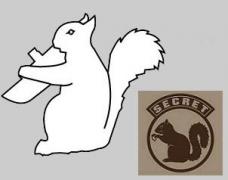
10th June, 1944. 94 P-38 Lightnings of the Fifteenth Air Force took off from airfields in Italy to strike the oil refineries at Ploiesti in Romania. Despite previous raids by heavy bombers, these still produced up to 15% of the Axis fuel supply. It was hoped that a low altitude attack by the P-38s could achieve surprise before smoke generators obscured the target. Meanwhile, their speed, small size and agility would give some protection from the lethal flak defences. Unfortunately, the reality was rather different.
It was one of the longest fighter-bomber missions flown during the Second World War, a 1,300 mile round trip. 48 P38s of the 82nd Fighter Group carried a single 1,000lb bomb and a 300 litre drop tank. They were escorted by the same number of Lightnings from the 1st Fighter group, but on the outbound leg 17 aircraft from the formation had to abort the mission, mostly with engine trouble. Another crash landed in Yugoslavia.
German radar and Romanian observers detected the raid well in advance of its arrival at Ploiesti and the defences were ready. The formation began to split at a turning point and some P-38s broke off to engage 6 German Dornier 217s. At this point, a group of 23 Romanian IAR-81s attacked, shooting down 9 of the escorting Lightnings and losing 3 of their own number. A mixed force of German and Romanian aircraft continued to engage the formation.
25 P-38s of the 82nd made it to the refineries, but the smokescreen was already well established and flak was intense. The Germans had recently shipped in more anti-aircraft guns, from 20 and 37mm cannon up to 88, 105 and even 128mm weapons. Taking their visual cues from surrounding landmarks, the Lightnings dropped their bombs without being able to see the results in most cases. Several aircraft limped away with damage and would not make it back to base.
The final analysis was not encouraging. 14 P-38s from the 1st Fighter Group and 9 from the 82nd had been shot down flak and fighters, a loss rate similar to the infamous low-level B-24 raid the previous August. Some damage was done to one refinery, but production resumed within days. Lessons had been learned, however; there would be no more low-level attacks. A series of heavily escorted conventional daylight USAAF raids, with some RAF bombing by night, eventually halted fuel production by mid-August 1944.
__________________
Guardian of the honey and nuts

Let's assume I'm right, it'll save time.
|